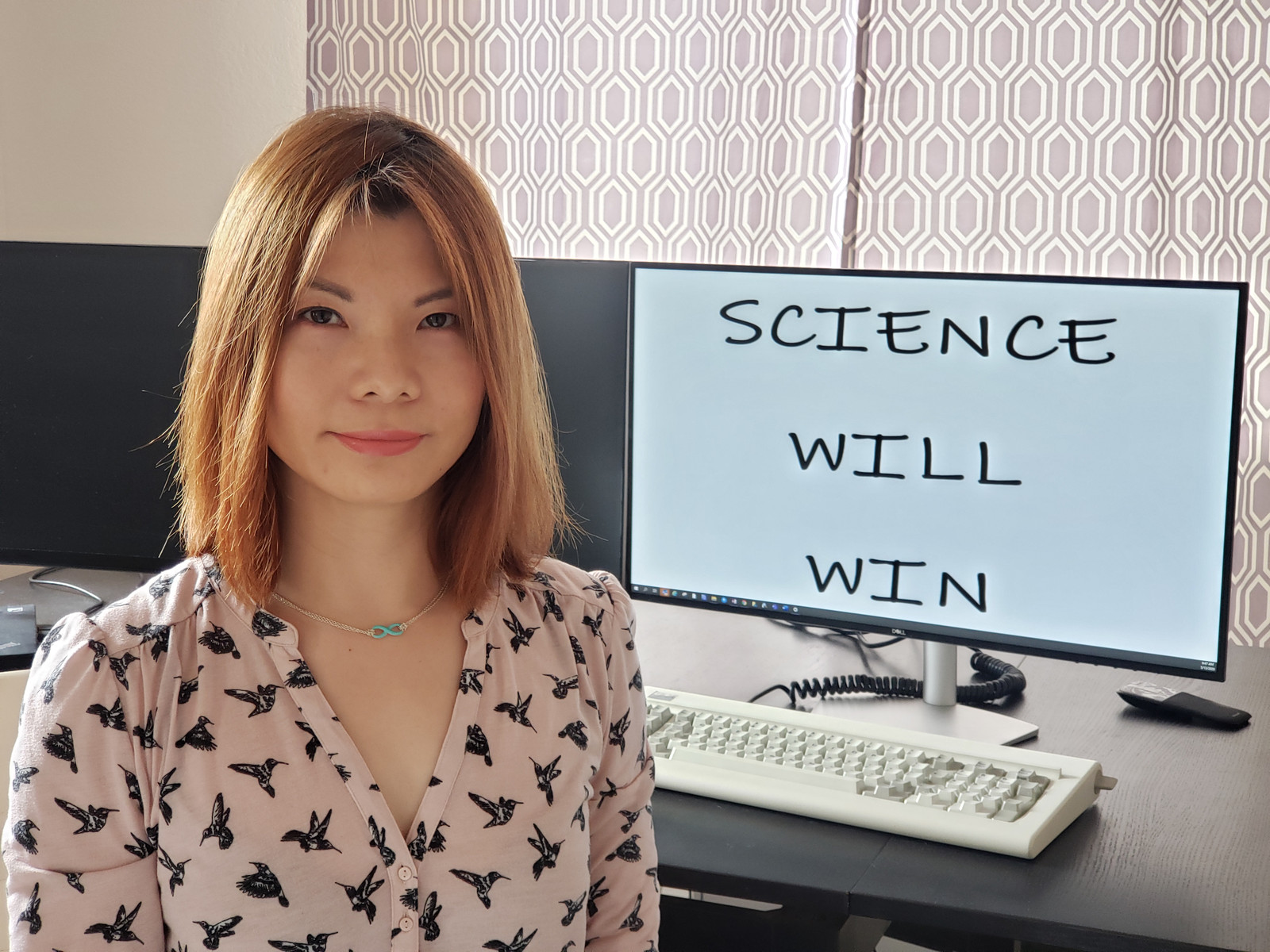Scientist at Home: Dan Xu – Many Roles, One Person

My name is Dan Xu and I am a scientist at Pfizer in the Cancer Vaccines and Immunotherapeutics (CVIT) group within the Pfizer Oncology Research and Development unit. I’m also a wife and mother, and these two roles collided at the beginning of the coronavirus epidemic a few months ago when I had to adjust to my new normal: working from home.
Many Cultures, One Community
As a Chinese American, the devastating effects of the coronavirus isn’t new to me. My parents and many other family members still live in China and have been under quarantine for the last few months. When the coronavirus first hit many communities there, I was extremely concerned about their health and safety. But, in many ways, it prepared me and my family for what was to come. Back in February, my parents reminded me to wear face masks when going out in public, something that’s become a common practice in many Asian-American communities following the SARs epidemic in 2002.
So, when the coronavirus pandemic started, I was hesitant to wear a face mask. Even though I knew it could potentially protect me from the virus, I was discouraged by what I saw on social media and on the news as many Asian-Americans who had decided to wear face masks in public faced increasingly hostile treatment and attacks. While I admired their courage to continue to wear the masks, I was worried that I would be discriminated against for making a similar decision. I started slowly by having conversations with my non-Asian friends and educating them about our cultural practice of wearing face masks. Gradually, they started to understand and even appreciated the idea of wearing a mask in public. Many of them even started making their own masks and have offered to make some for me. So, while face masks are just one aspect of a larger issue facing many Asian-Americans, I wanted to do more to help my community in the U.S. and back home in China. I was struggling to find a way to help them, until coronavirus was declared a global pandemic, and everything changed.
Vaccines are also Multi-faceted
As a Biomarker Clinical Assay Lead, I support translational biomarker assessments of the CVIT clinical programs. To put it simply, I make sure the right patient samples are collected, processed, shipped, tested, and the results are reported in the most appropriate way, so that the program can advance in the best direction.
I began my Pfizer career in 2009 and spent the first eight years on the Immunology team within CVIT, which, at the time, was housed in the Vaccines Research and Development unit. I worked on testing immune responses generated by different vaccination regimens in mice and monkeys for projects, including breast cancer, prostate cancer, chlamydia, influenza, and oncolytic virus, before moving into my current role.
For many people, when they think of vaccines, they think of them as preventive treatments for infectious diseases caused by bacteria or virus. These kinds of vaccines work by using weakened, killed, or specific pieces of the germs, or the toxin made by the germs, to start an immune response in the body. As a precautionary measure, this helps get the immune system ready to defend against infections that may be caused by similar kinds of germs in the future. Examples of preventive vaccines include vaccines for measles, Rabies, Shingles, and Tetanus, respectively. The current efforts of vaccine development to prevent coronavirus infection fall into this category.
However, the goal in our specific cancer vaccines research is slightly different. In this area of cancer research, the vaccine is therapeutic rather than preventive, meaning that the vaccine is administered after the disease or infection has already occurred. The goal is to activate the immune system of the patient to fight against existing cancer. The difference between preventive and therapeutic vaccine is that the former is administered to individuals as a precautionary measure to avoid future infection or disease, while therapeutic vaccines are administered after the individual is already affected by the disease or infection.
I love being able to work on something that can be applied to curing diseases. That’s why I chose to work on vaccines research and development back in graduate school and the same reason that I’ve stayed in the field of cancer vaccines. I have friends who suffer from cancer, and every time I learn something new or make reasonable progress, I can’t stop thinking about how they, and many others, would benefit from our breakthroughs.
We’re All in It Together
So, while I am not working directly on a COVID-19 vaccine, I am supporting the work of the team in many different ways. First, I am working from home to minimize the risk to those who must continue to work at our La Jolla site.
Many of these essential colleagues are busy evaluating protease inhibitors, as well as testing inhibitory activities of our current drugs. Also, members of my former team in Pearl River, have been working with BioNTech to develop a vaccine for coronavirus. I am very proud of them and extremely appreciative of their efforts to accelerate the development process to bring this important breakthrough to patients around the world.
So, until then, you’ll find me at home with my family balancing my roles as wife, mom, and scientist. Being a researcher has also prepared me for this, as I’ve started testing new recipes, arts and crafts designs, trampoline tricks, and kids yoga/ dancing routines with my five-year-old daughter.
I am a scientist at Pfizer in the Cancer Vaccines and Immunotherapeutics (CVIT) group within the Pfizer Oncology Research and Development unit. I’m also a wife and mother, and these two roles collided at the beginning of the coronavirus epidemic a few months ago when I had to adjust to my new normal: working from home.
